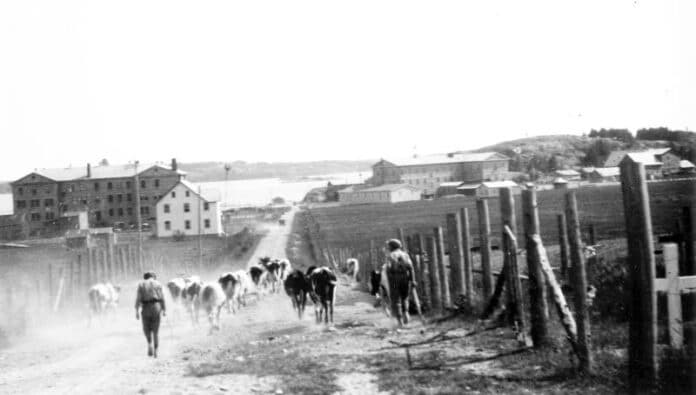Last Monday was the official National Day of Truth and Reconciliation, introduced by legislation in 2021 in response “to the Truth and Reconciliation Commission of Canada’s call to action number 80 by creating a holiday called the National Day for Truth and Reconciliation, which seeks to honour First Nations, Inuit and Métis Survivors and their families and communities and to ensure that public commemoration of their history and the legacy of residential schools remains a vital component of the reconciliation process”.
Aside from the one day set aside annually for the purpose, the intention of the Truth and Reconciliation Commission’s [TRC] call to action was to encourage Canadians to learn and understand the history and legacy of residential schools in the history of Canada and the Indigenous peoples of Turtle Island. How far we’ve progressed in learning that history, much less understanding the legacy is not encouraging. Meeting with representatives of the various Anishinabek communities affected by one particular residential school recently, it was pointed out that truth can be hard; not just the terrible facts and the multi-generational impacts of what boys and girls experienced in the schools, but also facing the truth that many children actually enjoyed their school days. The structure and friendships experienced fitted well with their personalities. For many others, school was hell on earth.
What has always impressed me over many years has been the resilience, the strength of so many survivors, as they tried to break the cycle of trauma that impacted them and their families. Boys and girls caught for as long as a decade or more in an environment that denied them love, warmth, family, went on in time to become parents with their own children. Many found it impossible to express love, provide warmth and support to their own children because they had never known such things themselves. Others found themselves passing on to the children the same negative behaviours they had learned in residential school.
Generations suffered long after the schools themselves closed. There were positive aspects too: education opened doors that would otherwise have remained closed; but at what cost? Children spent time in school, then returned home to find a barrier had been raised: some no longer understood their own language, and found it hard to communicate with their parents and siblings. They were even unable to join in prayers and ceremonies. Others discovered that a level of education denied to their ancestors was another barrier that they found difficult to overcome.
For non-Indigenous people in this country, there has been an awakening to these truths, and a growing desire to help in the reconciliation that is needed on both sides in order to heal the wounds of the past. That can also be a problem, as well-intentioned people have acted without truly learning the full truth of the past. Misleading media reports are accepted without question, especially if they paint the darkest picture of the past, and produce a simplistic viewpoint that fails to see the details, the variations in the experiences of Indigenous children across time and geography.
There can be no reconciliation without truth: that is a basic fact. How can we be reconciled when we have an incomplete or inaccurate picture of what we need to be reconciled about? This is something that all of us, Indigenous and non-Indigenous, have to do: the “history and the legacy of residential schools remains a vital component of the reconciliation process”. People may know nothing of the history beyond the one oft-repeated quote about “killing the Indian in the child”, not the same as killing the Indian, but reflective of a policy which sought to, as D. C. Scott stated in 1920: “I want to get rid of the Indian problem…Our object is to continue until there is not a single Indian in Canada that has not been absorbed into the body politic and there is no Indian question, and no Indian Department.”
That may, or may not be considered a definition of “cultural genocide”, but it is a far more nuanced approach than what is often understood as the Crown’s assimilisation policy, or, as it was known from 1830, its “Civilisation Policy”. In other words, while the effects of Residential Schools have been generally disastrous for Indigenous communities, creating serious and deep-rooted trauma for generations of people, Canadians still don’t “get it”. The general level of knowledge and understanding about Indigenous history overall is still remarkably, and appallingly, vague and confused. So, rather than just marking National Day of Truth and Reconciliation once a year, let’s make it an incentive to learn and inform in a more complete and deeper way.
Canada’s Indigenous peoples are not simply victims of colonisation, though they are that: they are also peoples with varied and rich cultures and traditions. They have proved themselves to be resilient, unbelievably patient and strong; deserving of respect and toleration as much as any other ethnic communities in Canada, but with deeper roots in the land, perhaps a greater sense of our place in the environment. Mutual respect and understanding is the goal, and the way to get there is through knowing the truth – the real truth. It is said among Indigenous peoples that healing takes seven generations. We all need to find and enable healing, understanding that this will take much more than marking one day a year and thinking we’ve done our bit. So many false ideas dominate the conversation; so many deep-rooted racist and unconscious assumptions need to be exposed and corrected. But, as someone said, “the Truth will set you free”.

